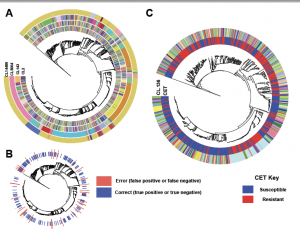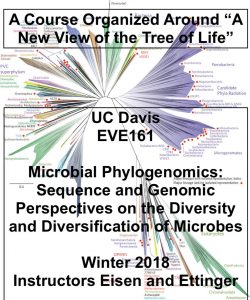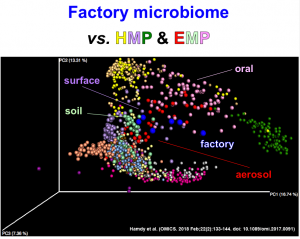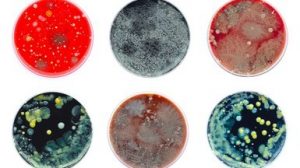Skin-associated bacteria are abundant indoors. A comparison across studies shows that up to 30% of bacterial sequences detected indoors are associated with the human body (see Table 1 in this 2016 paper). I’ve been kind of skeptical that these sequences represented live organisms, however. Rather, I suspected the high proportion of sequences that were human-associated …
This preprint seems like it may be of interest to folks: Precise prediction of antibiotic resistance in Escherichia coli from full genome sequences | bioRxiv Basically, the authors showed that, using a machine learning approach, they can quite accurately predict antibiotic resistance in E. coli from whole genome data. The emergence of microbial antibiotic resistance …
So – just a quick post for now. More details to come. But I wanted to get a little bit about this out there. For a few years I have been teaching a mid-level course at UC Davis on “DNA sequencing based studies of microbial diversity’. The course has evolved over the years from a …
The story behind: Toward the Drug Factory Microbiome: Microbial Community Variations in Antibiotic-Producing Clean Rooms (OMICS. 2018 Feb;22(2):133-144. doi: 10.1089/omi.2017.0091.) PMID: 28873001 [Preprint] It was in 2013, on my return to Cairo University after a couple of years as a visiting scientist at UCSD, that I met Amal for the first time. Amal was a fresh master’s …
The Gibbons group at the Institute for Systems Biology (ISB) is seeking a computationally-oriented Postdoctoral Fellow with interests in microbial ecology, evolution, and human health. The successful applicant will work with an interdisciplinary team of microbiologists, systems biologists, bioinformaticians, and clinical researchers to: Integrate and analyze multi-omic data from Arivale as part of the …
Collections of microbial cultures are critical tools in studying the microbial world around us. I have learned this from personal experience. The DSMZ for example, was absolutely essential to the entire GEBA (Genomic Encyclopedia of Bacteria and Archaea) project I coordinated via the DOE-JGI. I recommend that everyone out there find ways to support various …
Of potential interest: Sept. 12-14 2017. Training course in Preserving, storing and maintaining microorganisms. From the site: Presented by staff from CABI, this course will be of interest to everyone involved in the handling, distributing and storing microorganisms. The course covers all aspects of culture preservation, maintenance and culture collection management and complies with the …




